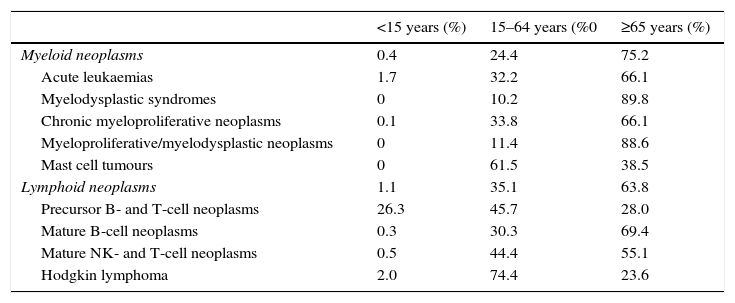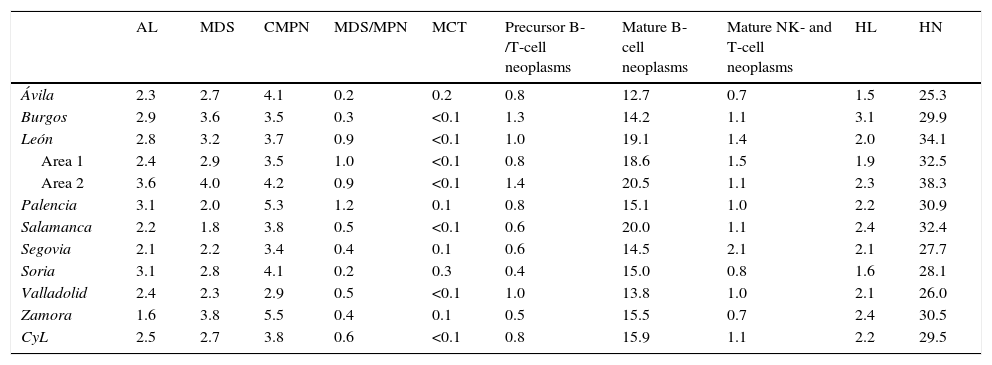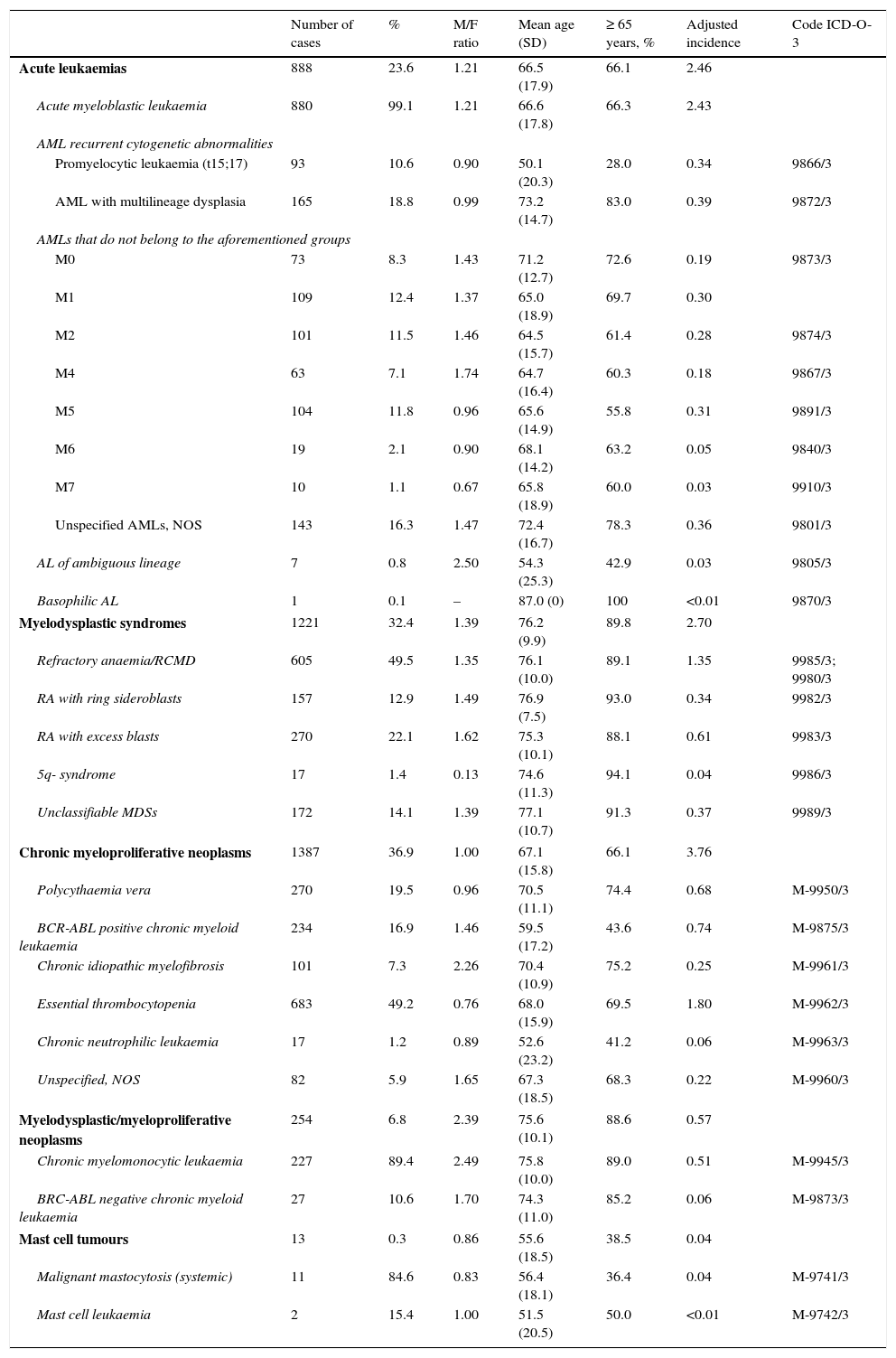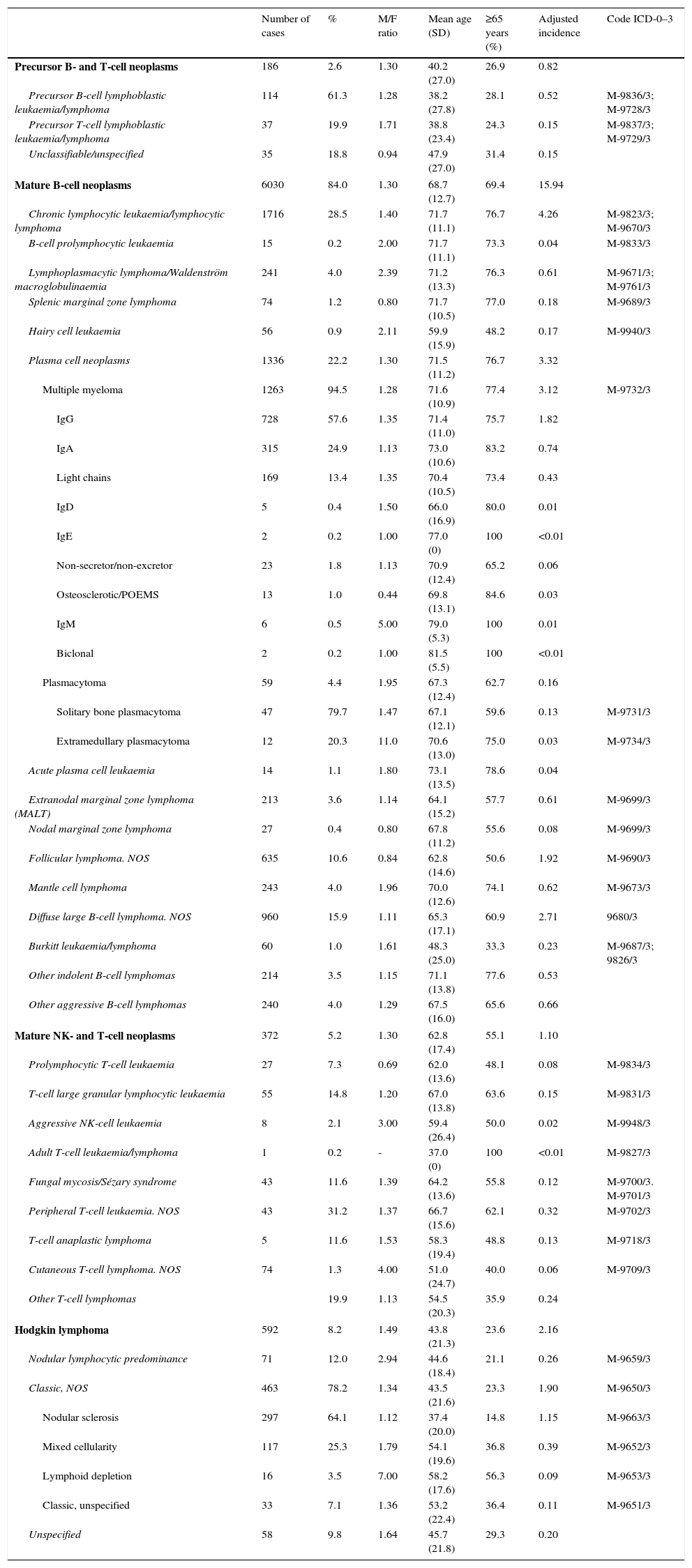We aimed to assess the incidence of haematological neoplasms (HNs) in Castilla y León (2.5 million inhabitants) and its distribution by age, gender and histological type.
Patients and methodThe epidemiological profile based on the described variables of the 10,943 HNs diagnosed during a 10-years period was analysed, compared with other studies.
ResultsThe overall age-adjusted incidence was 29.4 cases/105 inhabitants-year, with some geographical differences. The mean age was 67.3 years, with a turning point between the 6th and 7th decades of life from which there was a very significant increase of incidence. Two relevant facts where simultaneous with advancing age: decreased lymphoid neoplasms incidence and increased low degree neoplasms incidence. Lymphoid low degree neoplasms accounted for half of the registered processes, showed the greatest preference for male and reached the mode before the rest of neoplasms. Myeloid neoplasms incidence (9.5) was higher than that reported in other European registries, specially compared to southern European countries, opposite to lymphoid neoplasms incidence (20.0).
ConclusionsA higher myeloid neoplasms incidence and lower lymphoid one than expected was observed. The turning point of incidence is between the 6th and 7th decades of life, with a preference for male that decreases with age. There is an increased incidence of HNs in the area where a higher density of potentially polluting facilities is concentrated.
Conocer la incidencia de las neoplasias hematopoyéticas (NH) en Castilla y León, una región de 2,5 millones de habitantes, y su distribución en función de la edad, el sexo y el subtipo histológico.
Pacientes y métodoSe ha analizado el perfil epidemiológico en función de las variables descritas de las 10.943 NH diagnosticadas durante un período de 10 años, comparándolo con el de otros estudios.
ResultadosLa incidencia ajustada por edad alcanzó 29,4 casos/105 habitantes-año, con ciertas variaciones geográficas. La edad media fue de 67,3 años, con un punto de inflexión entre la sexta y séptima décadas de la vida, a partir del cual se produjo un aumento muy importante de la incidencia. A medida que avanzaba la edad, ocurrieron de forma paralela otros 2 hechos relevantes: una disminución de la incidencia de los procesos linfoides y el aumento de la de las neoplasias de bajo grado de agresividad. Los procesos linfoides de bajo grado representaron la mitad de los casos del registro, mostraron una mayor preferencia por el sexo masculino y alcanzaron la moda antes que el resto de las NH. La incidencia de neoplasias mieloides (9,5) fue superior a la descrita en otros registros europeos, especialmente en los países del sur de Europa, contrariamente a lo observado con las neoplasias linfoides (20,0).
ConclusionesSe observó una mayor incidencia de neoplasias mieloides y menor de linfoides de lo esperado. El punto de inflexión de incidencia se situó entre la sexta y séptima décadas de la vida, con predominio del sexo masculino, que se reduce con el aumento de la edad. La mayor incidencia de NH se observó en la zona donde se concentra una mayor densidad de industrias potencialmente contaminantes.














